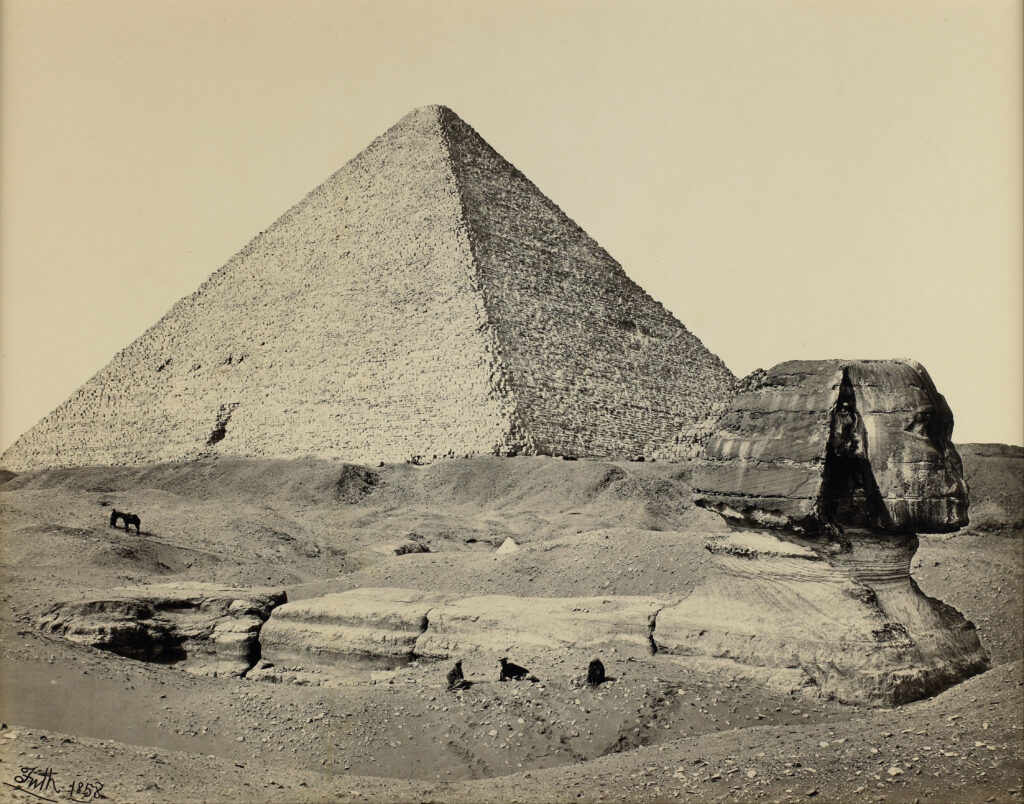
Francis Frith, The Great Pyramid and the Great Sphinx, Google Art Project
ENDNOTES, November 2020
In this edition: Saint-Saëns and Henrique Oswald, Piano Concertos; Piano music by contemporary Iranian composers, Farhat and Tafreshipour, reviewed by STUART MILLSON
A stream of elegant, late-romantic melody this month, courtesy of the SOMM label – which brings listeners a beautifully-recorded programme of piano concertos by Saint-Saëns (his Fifth, “The Egyptian”) and his contemporary, Henrique José Maria Carlos Luis Oswald. The name of Oswald is – I confess – new to me; and he seems to be one of many highly-gifted late-19th-century romantics (such as Litolff and Pierne) overshadowed and obscured by the greater names of the canon. Oswald was born in Brazil in 1852, came to Europe at the age of 16 and studied successfully in Italy – later earning plaudits from Saint-Saëns, to whose style he comes very close. The traditional three-movement (op. 10) concerto is given a light-of-touch, charismatic performance by soloist, Clelia Iruzun, accompanied by the silky-toned Royal Philharmonic Orchestra, conducted by Jac van Steen. Throughout its roughly half-an-hour-long course, the work creates a feeling of ever-deeper warmth – of soft-summer garden colours, Chopin-like longing, and yet with the tuneful boldness of Saint-Saëns urging things along – so that despite the dreamy romanticism, there is energy and structure – and real form.
Yet despite the glow and moments of drama – the first movement is marked, Allegro (un pocoagitato) – it is the Saint-Saëns which truly stands out on the disc: the famous ‘Egyptian’ concerto, with its effortless wit and local colour; not to mention that technique which always excites with Saint-Saëns – his sense of momentum, as if we are hurrying along the boulevards to a sparkling party. Written in 1896 on one of his exotic trips to North Africa, this time to Luxor, the Fifth Piano Concerto is more than just a postcard from Egypt: it seems to be coloured by so many unusual flavours from way beyond Europe. Perfumes from the French Empire, the Far and Middle East, abound – yet are arranged within all the formality of the classically-inspired concerto form. Perhaps the ‘Egyptian’ concerto is the last true 19th-century work for piano and orchestra; the closing of the door on the century of Brahms and Tchaikovsky – and a last pause before a turn in time, toward the new sound world which would be created by Ravel, Bartok and Debussy.
Saint-Saëns may have painted fanciful impressions of the Orient or Middle East, but new from the mètier label comes a disc of authentically home-grown piano music by two Iranian composers, Hormoz Farhat (b. 1928) who studied with Milhaud and left Iran at the time of the Islamic revolution and Amir Mahyar Tafreshipour (b. 1974) – a student of Esbjerg Academy of Music in Denmark and the composer of a 2005 commission for the BBC Symphony Orchestra – an Iranian Harp Concerto, broadcast by BBC Radio 3.
From his photo-portrait in the CD booklet, Farhat looks like an elder statesman (complete with swept-back silver hair and cravat) of the Western-leaning, Persian classical tradition, before so much of the “foreign” European culture was swept away by the Ayatollah. Received enthusiastically by Queens University, Belfast and the School of Music at Dublin University, Trinity College, Farhat is the composer of a large number of works, some symphonic – but which, sadly, have not as yet entered the mainstream repertoire. Pianist Mary Dullea’s intriguing new collection of piano pieces for mètier will hopefully redress the balance, especially if the extraordinary three-minute Toccata is anything to go by: an austere, relentless, commanding statement – containing it seems the very word of Zarathustra, or summoning a sense of the landscape and legends of the composer’s ancient country. Dating from 1952, the Toccata is based upon a Persian folk-song and was dedicated to the Russian composer, Alexander Tcherepnin.
It was this time that an American composer, Lukas Foss, took up Farhat’s First Piano Sonata – a work of the mid-1950s, a work written during the Iranian’s time spent as a composition pupil of Foss. At just under 14 minutes in length, the sonata would sit comfortably alongside music by Bartok or Prokofiev – and yet it is hard to pin Farhat down to a truly Western style, even when occupying, as he does, the borders of tonality.
One might have expected the younger composer, Tafreshipour, to have followed an even more abstract style – and yet we find in works such as Celebration at Pasargadae (Pasargadae being a capital city in the ancient Persia of 500 BC) a tendency to resurrect the technique of music tone-painting. The work imagines the Persian new year: the grand, monumental buildings and the throng of people crowded together, united in their beliefs. Pendar – a meditation of stillness and deep inner thoughts, and Shabahang – a nocturne, uniting a memory of the coast of Ireland with that of Iran – show a considerable depth to one of Iran’s and the modern world’s lesser-known, younger-generation composers.
Stuart Millson is the Classical Music Editor of The Quarterly Review
CD details:
Saint-Saëns and Oswald, Piano Concertos, RPO/van Steen/Iruzun. SOMMCD 276.
Persian Autumn, piano works by Farhat and Tafreshipour, Mary Dullea, piano. Mètier 28610.










